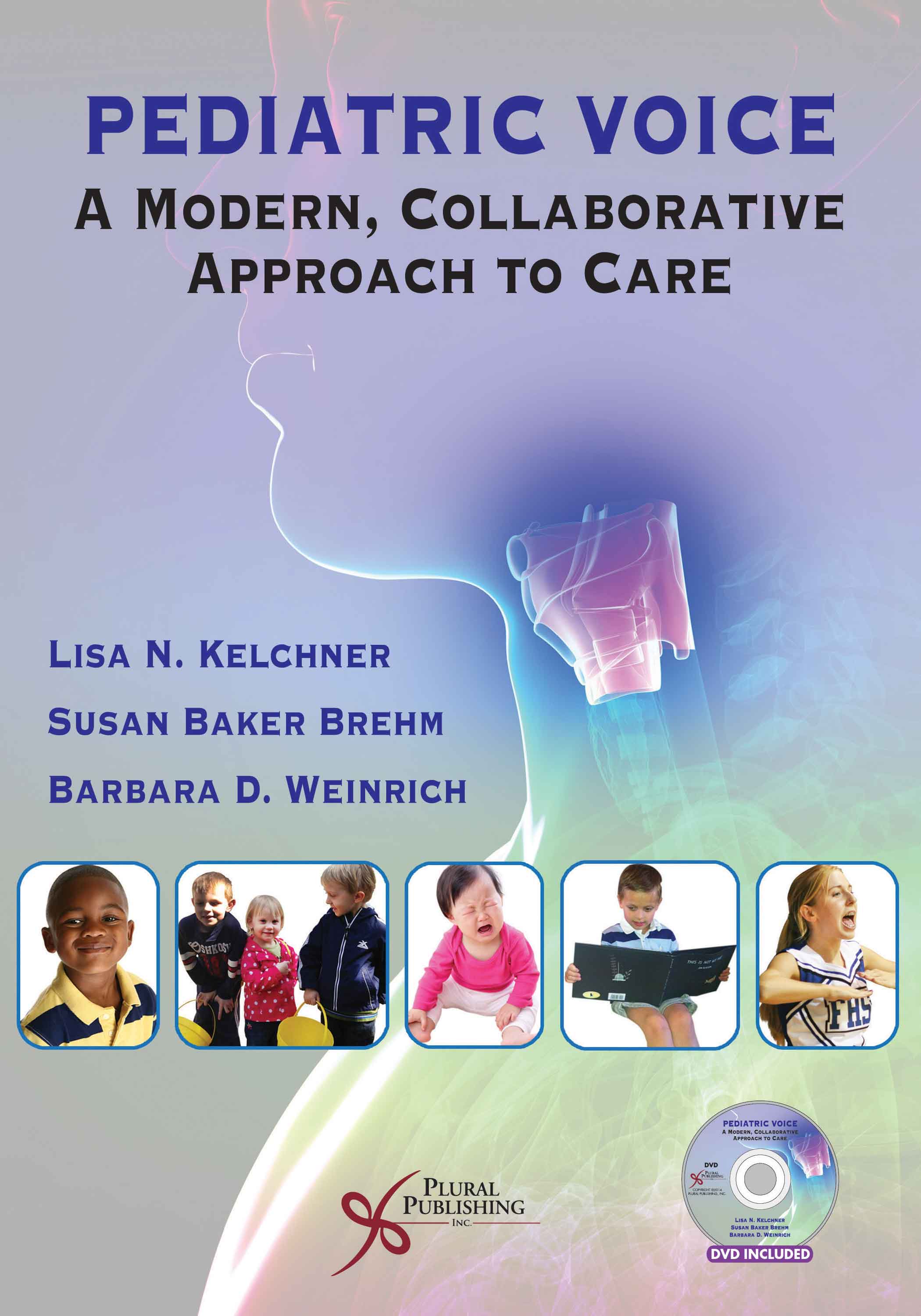
Pediatric Voice: A Modern, Collaborative Approach to Care
First Edition
Lisa N. Kelchner, Susan Baker Brehm, Barbara D. Weinrich
Details: 240 pages, B&W with Color Insert, Softcover, 7" x 10"
ISBN13: 978-1-59756-462-5
© 2014 | Available
For Instructors
Purchase
Most speech-language pathologists see children as part of their practice. Pediatric Voice: A Modern, Collaborative Approach to Care offers a comprehensive and current review of the care of children with voice disorders. It includes an overview of anatomy and physiology of the pediatric laryngeal mechanism, associated neural controls, and phonatory behavior across childhood. A thorough discussion of the etiologic correlates of pediatric voice disorders is provided. The spectrum of evaluation techniques ranging from basic to innovative high tech instrumentation is presented. Evidence-driven treatment approaches for common as well as unique pediatric voice disorders is covered in a practical, case-based format. The central theme throughout this text is the authors' focus on a truly integrated, multidisciplinary approach to the care of children with voice disorders, yet the needs of the solo or school-based practitioner are addressed as well.
Included with the text is a supplemental DVD with select practice materials in printable patient use format, color images of laryngeal pathologies, and digital audio and video samples for perceptual rating practice with additional case studies.
With contributions from Alessandro de Alarcon, MD, MPH; Wendy LeBorgne, PhD; and Keiko Ishikawa, MM, MA.
Acknowledgments
Contributors
- Chapter 1. Introduction
- Chapter 2. Anatomy and Physiology of the Pediatric Upper Aerodigestive Tract, Larynx, and Respiratory System
- Overview
- Anatomy of the Upper Respiratory System: Overview of Embryologic Development
- Anatomy of the Upper Respiratory System: Overview of Postnatal Anatomy and Developmental Changes
- Anatomy and Physiology of the Pediatric Upper Aerodigestive Tract
- Nasal passages
- Pharynx
- Esophagus
- Larynx
- Vocal Fold Microstructure- Contributed by Keiko Ishikawa
- Basics of Histology
- Vocal Fold Histology
- Developmental Changes in the Vocal Fold Across the Lifespan
- Fetus and Infant
- Young Children
- Adolescents
- Older Adult and Elderly
- Pediatric Respiratory Anatomy and Physiology
- Anatomy and Physiology of the Lower Respiratory Tract
- Tracheal Airway
- Bronchioles/Bronchi
- Lungs/Thoracic Cavity
- Muscles of Respiration
- The Physiology of Breathing
- The Physiology of Phonation
- The Basics
- Theories of Phonation
- Pitch and Intensity Changes
- Resonance
- Chapter Summary
- References
- Chapter 3. Neural Controls of Voice
- Overview
- Vocalization and Infant Cry
- Central Neural Controls
- Brainstem
- Cortical and Subcortical controls
- Peripheral Neural Controls
- Cranial Nerves
- Laryngeal and Pulmonary Reflexes
- Pediatric Voice and Disorders of the CNS
- Chiari Malformation
- Cerebral Palsy
- Movement Disorders
- Voice and Autism Spectrum Disorder
- Chapter Summary
- References
- Chapter 4. Etiology and Management of Pediatric Voice Disorders- Contributed by Alessandro de Alarcon
- Introduction
- Pediatric Voice Disorders: Risk Factors and Symptoms
- Common Vocal Fold Pathologies
- Vocal Fold Nodules, Cysts, and Polyps
- Management
- Vocal Fold Process Granulomas
- Management
- Unilateral Vocal Fold Paralysis
- Management
- Bilateral Vocal Fold Paralysis
- Management
- Laryngeal Webs
- Management
- Recurrent Respiratory Papillomatosis
- Management
- Laryngopharyngeal Reflux and Eosinophilic Esophagitis
- Management
- Sulcus Vocalis and Vocal Fold Scar
- Management
- Chapter Summary
- References
- Chapter 5. A Collaborative Approach to Evaluating the Child With a Voice Disorder
- Overview
- Evaluation Models and Approaches
- The Solo and School-Based Practitioner with Otolaryngology Referral
- Screenings
- The Medical Evaluation
- Oral Peripheral Examination
- Hearing Screening
- Background and History
- Significant Medical History
- Vocal Hygiene
- Vocal Symptoms
- Airway History
- Behavioral Questions
- Special Circumstances
- Assessing Impact: Handicapping and Quality of Life Indicators
- Perceptual Evaluation
- Instrumental Assessment
- Acoustic Analysis
- Aerodynamics
- Electroglottography
- Endoscopy
- Pulling It All Together: Case Summaries
- Case 1. Hospital-Based Clinician
- Case 2. School-Based Clinician
- Case 3. Private Practice Clinician
- Chapter Summary
- References
- Appendix 5-A. Initial Intake History Form
- Appendix 5-B. DVD Table of Contents
- Chapter 6. A Collaborative Approach to Treatment
- Overview
- Collaborative Treatment Model
- Solo or School-Based Practitioner
- Making the Case
- Communicating with Teachers and Others
- Pediatric Voice Disorders and Their Identification Under IDEA
- Access to Professional Care
- Establishing a Connection with Child and Family
- Indirect Treatment Methods
- Direct Treatment Methods
- Vocal Function Exercises
- Resonance Therapy
- Methods Based on Semi-Occlusion of the Vocal Tract
- Additional Treatment Techniques
- Adapting Adult Techniques for Children/Improving Compliance
- Child and Adolescent Differences
- Technology and Therapy
- Gaming
- Apps for Google Android and Apple iOS Devices
- Teleheath and Pediatric Voice Therapy
- Pediatric Performer: Considerations for Performing Voice-Childhood Through Adolescence- Contributed by Wendy Le Borgne
- Historical Vocal Pedagogy of Young Singers
- Considerations for Singing During Puberty
- Laryngeal Pathology in the Pediatric Performer
- Pulling It All Together: Case Summaries
- Case 1. Patient: Lancer (Bilateral Vocal Fold Lesions)
- Case 2. Patient: Tom (Bilateral Vocal Fold Lesions)
- Case 3. Patient: Elizabeth (Functional Voice Loss)
- Case 4. Patient: Audrey (Anterior Laryngeal Web and Chronic High Pitch Voice)
- Case 5. Patient: Todd (Therapy to Promote Supraglottic Voice Use)
- Case 6. Patient: Zachary (Bilateral Vocal Fold Paralysis)
- Case 7. Patient: Jeff (Subglottic Stenosis and Airway Reconstruction)
- Chapter Summary
- References
- Appendix 6-A. Vocal Hygiene Guidelines
- Appendix 6-B. Vocal Hygiene Record
- Appendix 6-C. Gastroesophageal Reflux Information for Families
- Appendix 6-D. Vocal Function Exercises Home Instructions
- Appendix 6-E. Vocal Function Exercises Data Form
- Appendix 6-F. Resonance Therapy Home Instructions
- Appendix 6-G. Resonance Therapy Data Form
- Appendix 6-H. DVD Table of Contents: Demonstration of Treatment Methods
- Chapter 7. Managing Children With Complex Voice Disorders
- Overview
- Pediatric Airway Injury
- Subglottic Stenosis
- Pediatric Tracheotomy and Tracheostomy
- The Role of the SLP in Caring for a Child with a Tracheostomy
- Airway Reconstruction
- Physical Findings and Voice Outcomes Post Airway Reconstruction
- Voice Evaluation for the Child Pre- or Post- Airway Reconstruction
- Treatment of Dysphonia Following Airway Reconstruction
- Pediatric Laryngectomy
- Symptoms and Causes
- Treatment
- Paradoxical Vocal Fold Dysfunction
- Symptoms and Causes
- Diagnosis
- Treatment
- Puberphonia
- Symptoms and Causes
- Diagnosis
- Treatment
- Muscle Tension Dysphonia in Children: An Overview
- Pulling It All Together: Case Summaries
- Case Summary 1. Patient: Sam (Pediatric Laryngectomy)
- Case Summary 2. Patient Katie (Paradoxical Vocal Fold Dysfunction)
- Chapter Summary
- References
- Appendix A. Supplement on Wound Healing and the Vocal Folds- Contributed by Keiko Ishikawa
- Wound Healing and the Vocal Folds
- Wound Healing Process
- Factors that Influence Wound Healing
- Vocal Fold Wound Healing and Scar
- Voice Therapy and Wound Healing
- References
- Wound Healing and the Vocal Folds
Index
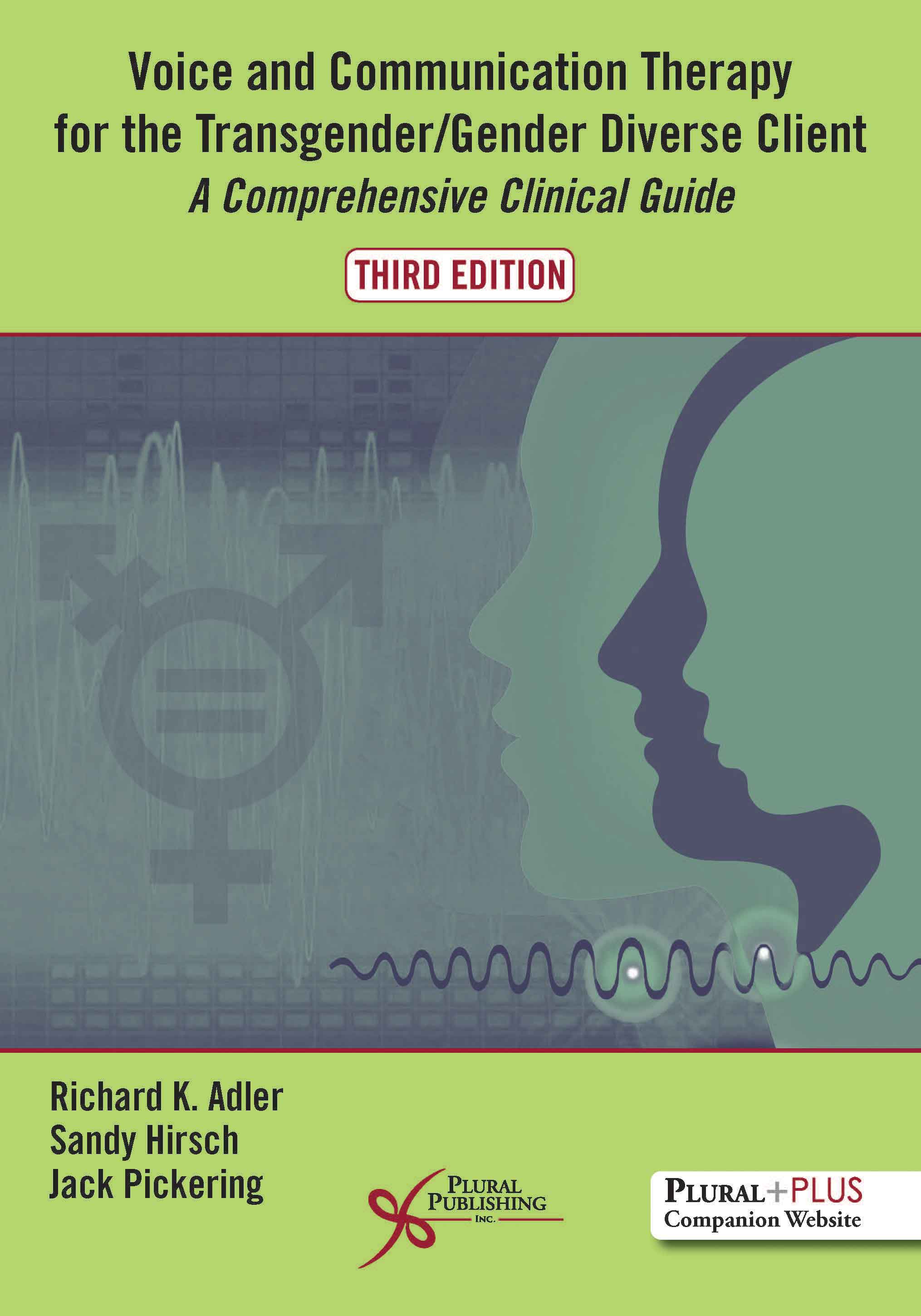
Voice and Communication Therapy for the Transgender/Gender Diverse Client: A Comprehensive Clinical Guide
Third Edition
Richard K. Adler, Sandy Hirsch, Jack Pickering
Details: 412 pages, B&W, Softcover, 7" x 10"
ISBN13: 978-1-94488-330-0
© 2019 | Available
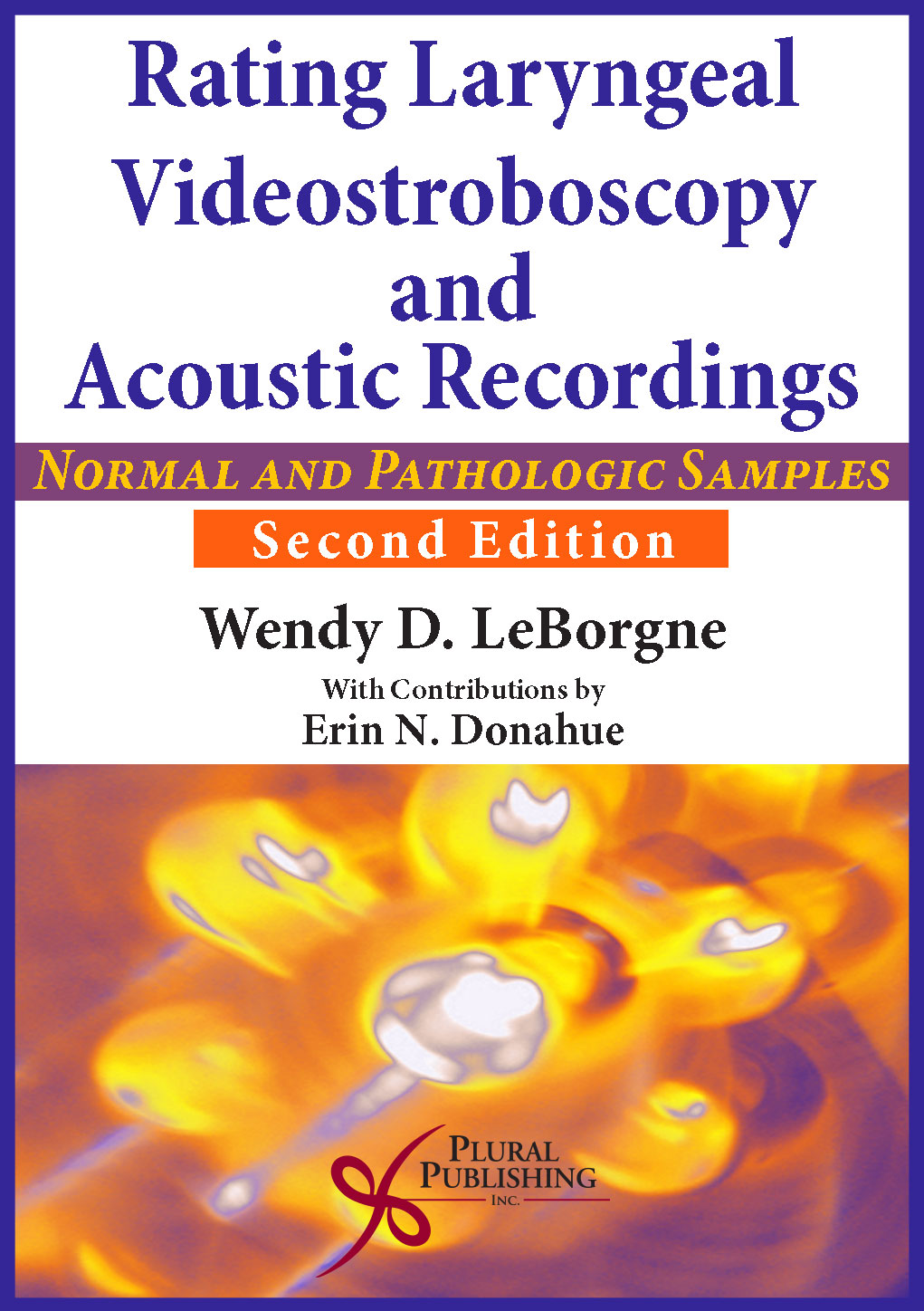
Rating Laryngeal Videostroboscopy and Acoustic Recordings: Normal and Pathologic Samples (Online Access)
Second Edition
Wendy D. LeBorgne
Details: Online Access
© 2017 | Available
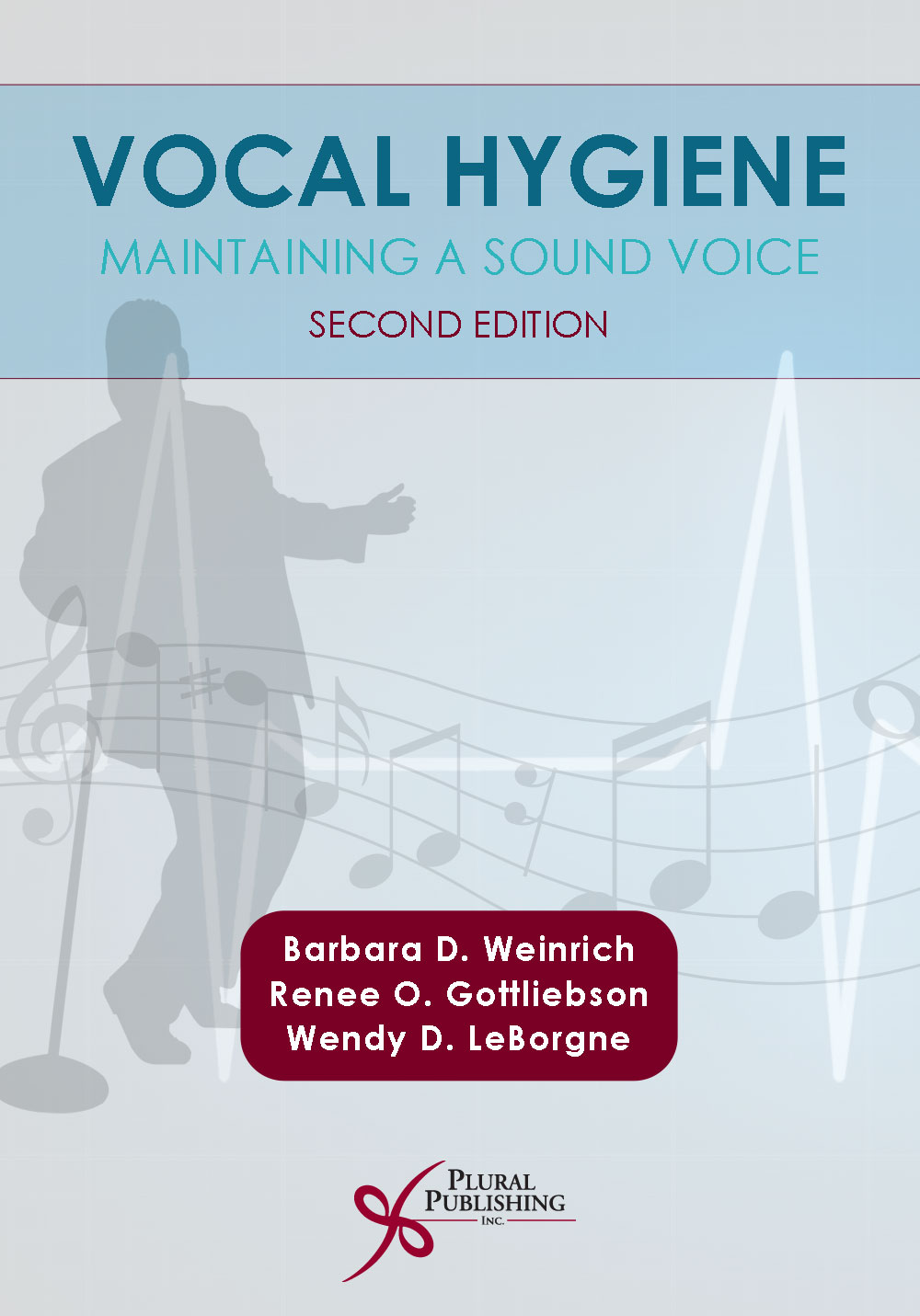
Vocal Hygiene: Maintaining a Sound Voice (Online Access)
Second Edition
Barbara D. Weinrich, Renee O. Gottliebson, Wendy D. LeBorgne
Details: Online Access
© 2017 | Available
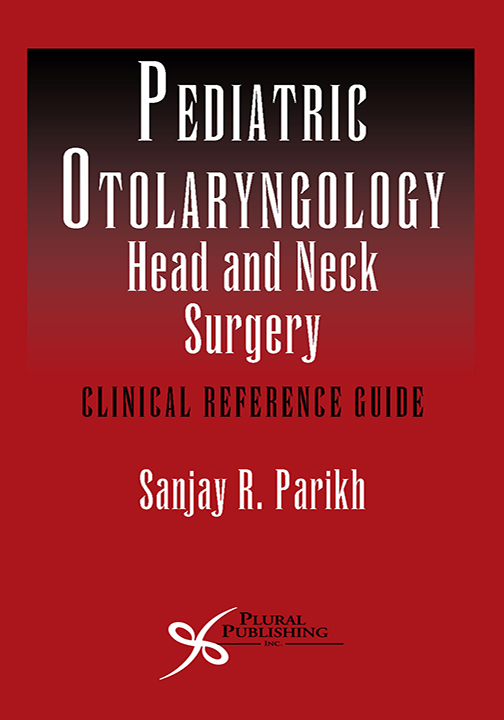
Pediatric Otolaryngology-Head and Neck Surgery: Clinical Reference Guide
First Edition
Sanjay R. Parikh
Details: 752 pages, B&W, Softcover, 4.5" x 8"
ISBN13: 978-1-59756-528-8
© 2014 | Available
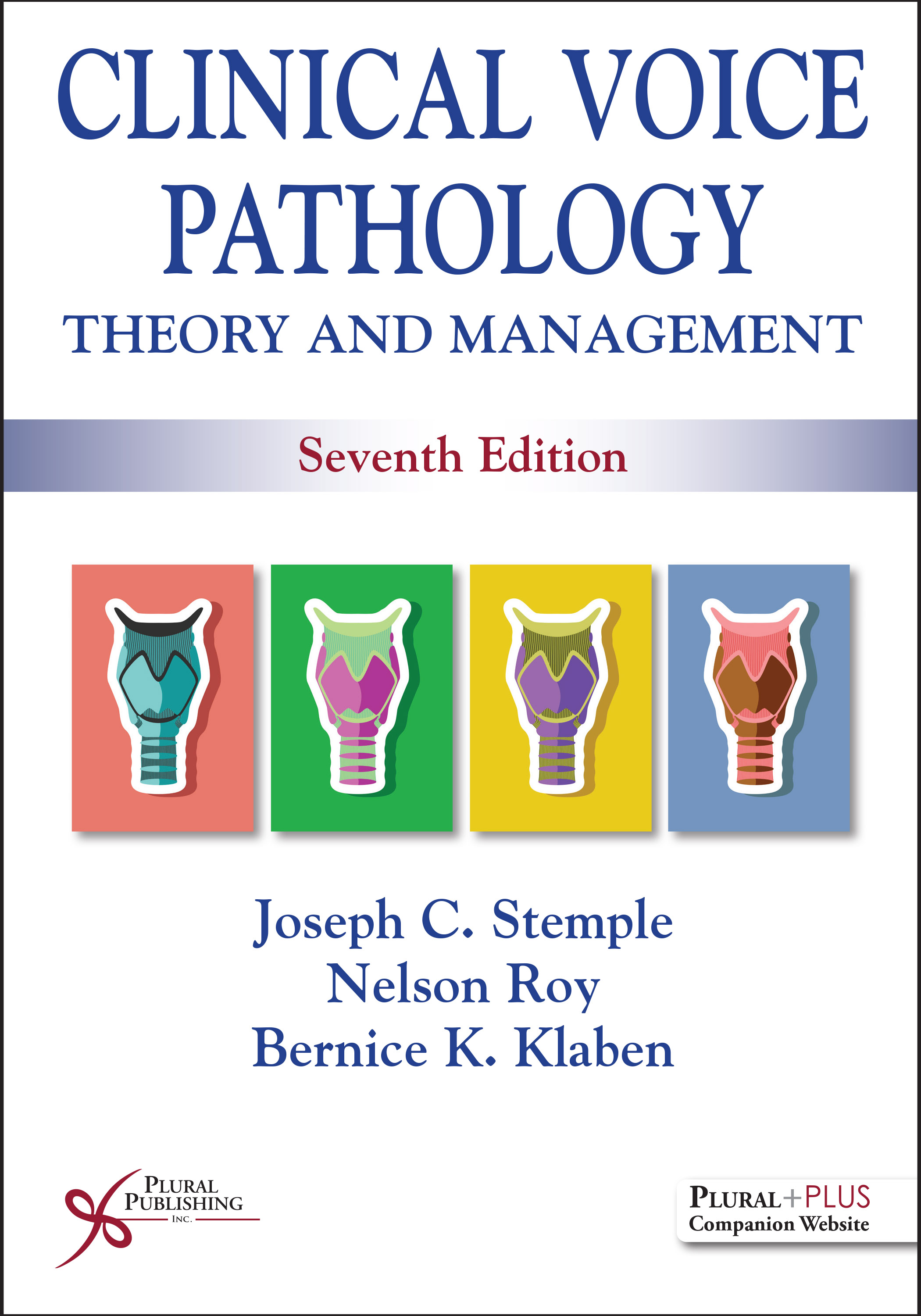
Clinical Voice Pathology: Theory and Management
Seventh Edition
Joseph C. Stemple, Nelson Roy, Bernice K. Klaben
Details: 644 pages, Full Color, Softcover, 7" x 10"
ISBN13: 978-1-63550-618-1
© 2026 | Available
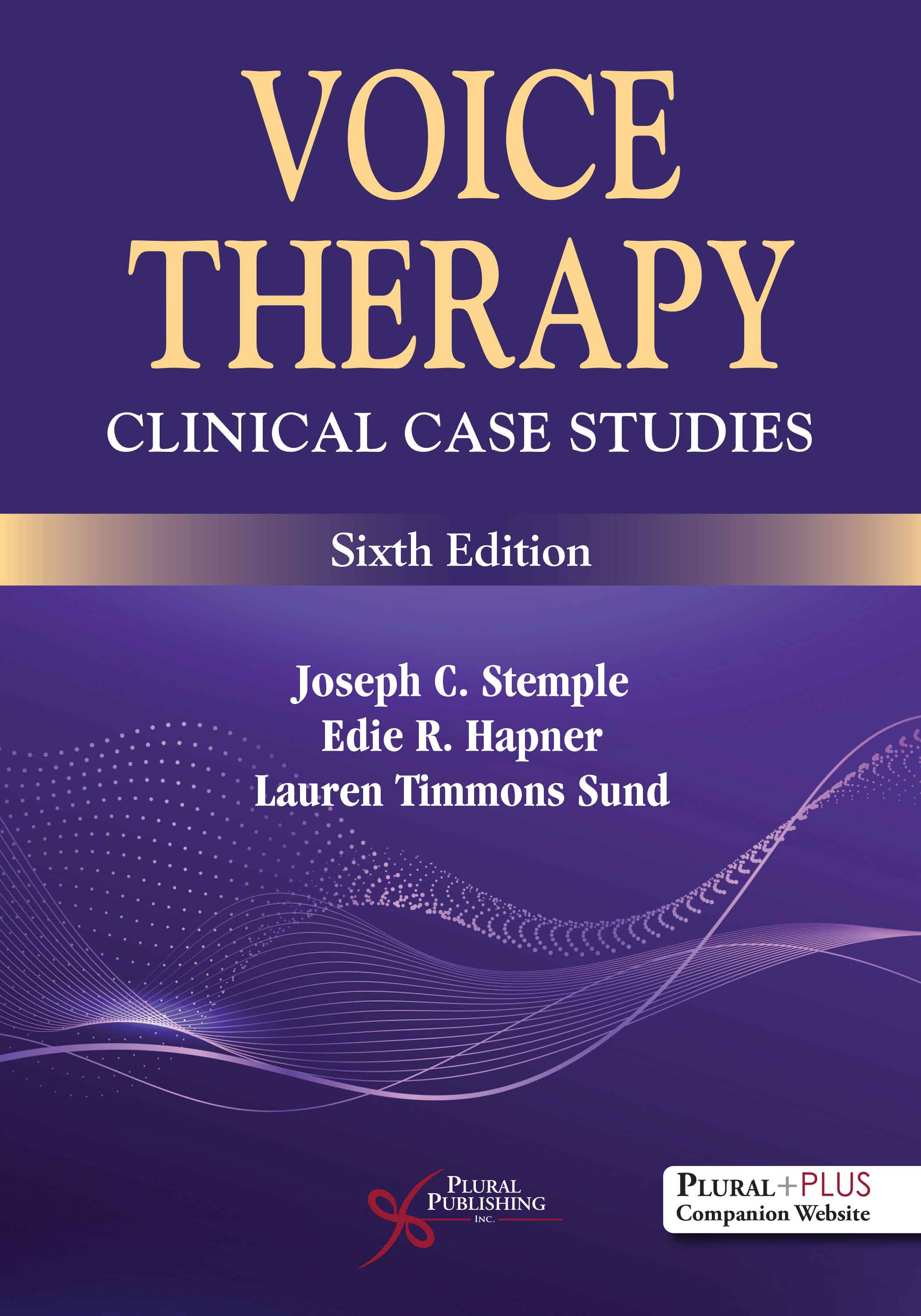
Voice Therapy: Clinical Case Studies
Sixth Edition
Joseph C. Stemple, Edie R. Hapner, Lauren Timmons Sund
Details: 499 pages, B&W, Softcover, 7" x 10"
ISBN13: 978-1-63550-731-7
© 2026 | Available

